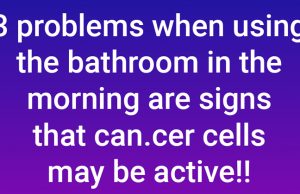
Vinegar has long been considered as a versatile and effective cleaning agent, able to solving many household tasks. However, many people use vinegar for cleaning result in streaky windows and less-than-shiny surfaces.
In this article, we will discover the science behind vinegar’s cleaning power, popular mistakes people make, and the right way to apply vinegar to achieve streak-free windows and shiny surfaces.
1. The Science Behind Vinegar’s Cleaning Power
Vinegar’s cleaning power orginated from its main component, acetic acid, which typically makes up about 5-8% of the solution. This acidity gives vinegar its ability to remove mineral deposits, grease, and grime, making it an effective cleaner for a variety of surfaces.
Additionally, vinegar’s acidic nature makes it a natural disinfectant, able to remove some bacteria and viruses. While it may not be as potent as commercial disinfectants, vinegar can still decrease the presence of harmful microorganisms on surfaces, supporting to a cleaner and safer home environment.
2. Common Mistakes When Using Vinegar for Cleaning
One of the most common mistakes people make when using vinegar for cleaning is using it undiluted.
Another mistake is using vinegar on the wrong surfaces. Vinegar should not be applied on natural stone surfaces like granite or marble, as its acidity can engrave and destr0y the stone.
3. The Right Vinegar to Use for Streak-Free Windows
For cleaning windows, using white vinegar is the best choice. It is clear, colorless, and has a higher acidity level compared to other types of vinegar, such as apple cider vinegar. The shortage of color ensures that it won’t stain surfaces, and its high acidity makes it effective at removing through grime and leaving windows streak-free.
When buying vinegar for cleaning, seek a product with at least 5% acetic acid content.
4. Preparing the Perfect Vinegar Cleaning Solution

To get ready with an effective vinegar cleaning solution for windows, blend equal parts distilled white vinegar and water in a spray bottle. For example, mix 1 cup of vinegar with 1 cup of water.
For particularly stubborn grime or mineral deposits, you can increase the vinegar concentration slightly, using a 2:1 ratio of vinegar to water. However, always test the solution on a small, inconspicuous area first to ensure it won’t damage the surface.
5. The Best Tools to Use with Vinegar for Cleaning
Microfiber cloths are the best tool to mix with vinegar for cleaning windows and surfaces. They are highly absorbent, lint-free, and gentle on surfaces, making them perfect for achieving a streak-free finish. Avoid using paper towels, as they can leave lint and streaks behind.
For windows, a squeegee can also be an effective tool. After using the vinegar solution with a spray bottle, use a squeegee to get rid of excess liquid and prevent streaks.
6. Step-by-Step Guide to Cleaning Windows with Vinegar

1. Start by dusting the window surface with a dry microfiber cloth to get rid of loose dirt and debris.
2. Sprinkle the vinegar and water solution onto the window, covering the entire surface evenly.
3. Use a clean microfiber cloth to wipe the window in a circular motion, loosening any dirt and grime.
4. For a streak-free finish, apply a squeegee to remove the solution from the window, starting at the top and working your way down. Wipe the squeegee blade with a cloth after each pass.
5. Finish by wiping the edges of the window with a clean, dry microfiber cloth to remove any remaining moisture.
7. Popular Viral Hacks: What Works and What Doesn’t

There are many viral cleaning hacks involving vinegar, but not all are effective or safe. One popular hack is using vinegar to clean microwave ovens by heating a bowl of vinegar and water inside. This works well, as the steam helps remove food splatters, making them easier to wipe away.
However, some hacks, like using vinegar to clean hardwood floors, can be destr0ying. The acidity of vinegar can clear the finish from wood floors, leading to dullness and potential damage.
8. Safety Tips When Using Vinegar as a Cleaner
While vinegar is generally safe to use, there are a few warn:ings to keep in mind. Avoid blending vinegar with bleach or hydrogen peroxide, as this can create harmful gases. Always apply vinegar in a well-ventilated area to avoid breathing in fumes.
When cleaning with vinegar, wear gloves to protect your skin, especially if you have sensitive skin or cuts.




















